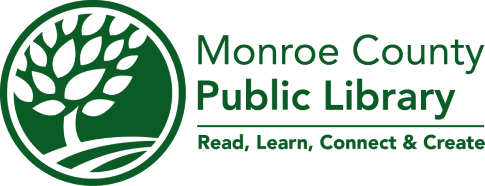
The goal of the Advancing Racial Equity Collection is to help Hoosiers think, read, and talk about racial injustice and systemic racism. The collection contains seven juvenile book club kits and multiple copies of a juvenile storytime kit. This collection has been made possible through a grant from Indiana Humanities with funds from Lilly Endowment Inc.
“We chose books that not only tackle issues Black, Brown, and Indigenous community members go through each day, but also books that celebrate, validate, and empower that same community,” said Children’s Librarian, Ginny Hosler. Titles were selected from a pre-approved list created by Indiana Humanities.
We often receive requests for diverse books to introduce and help their child understand experiences different from their own. In addition to single family parent and caregiver requests, daycares, youth groups, church groups, and other community organizations have asked for materials that are antiracist or address systemic racism as well.
While the goal of this collection is to help children and families talk about race issues, we also want to increase the availability of stories about Black children.
“We talk a lot about ‘windows and mirrors’ when we talk about diversity in children's literature," said Hosler. "If you never see yourself in the media you consume, you begin to believe you don't matter. Likewise, if you only see yourself in the media, you begin to believe others don't matter. Children who see their identity represented and celebrated are validated and empowered.”
In this way, books act as mirrors for readers where they can look at themselves and their identity, feel understood and seen. The other side of that, the windows portion, is that children also need to see identities that are not the same as theirs to teach understanding, confront bias, have empathy for others, and perhaps most important, see that differences should be celebrated.
Having both the experience of seeing your identity validated as well as seeing others equally represented is necessary when talking about diversity and inclusion in any capacity, whether it's race, socio-economic status, religion, sexual orientation, and more.
As a public service institution, it is our responsibility to be responsive to the needs of our community, to address inequities, and to provide a place of safety and inclusiveness. It is also our responsibility to provide resources and information to help individuals seek knowledge which can lead to greater understanding and compassion.
Resources and Support
Common Sense Media: How to Talk with Kids About Racism and Racial Violence
Movies, TV, and books can be powerful teaching tools when it comes to helping kids understand race, racism, and a history of racial oppression.
Embrace Race: 10 Tips for Teaching and Talking to Kids About Race
At EmbraceRace, they identify, organize – and, as needed, create – the tools, resources, discussion spaces, and networks needed to nurture resilience in children of color, nurture inclusive, empathetic children of all stripes, raise kids who think critically about racial inequity, and support a movement of kid and adult racial justice advocates for all children.
NPR (National Public Radio): Talking Race With Young Children
This NPR report features advice from expert educators on how to handle conversations about race, racism, diversity and inclusion, even with very young children.
PBS (Public Broadcasting Service): Talking to Young Children About Race and Racism
PBS has complied tips and resources to help you have a meaningful conversation with young children about race, racism, and being anti-racist.
P.R.I.D.E. (Positive Racial Identity Development In Early Education)
P.R.I.D.E goals are to help young African American children develop a positive racial identity, support teachers and parents by building their racial knowledge, and raise awareness of the impact of race on young children. P.R.I.D.E. is a program within the Office of Child Development, which is part of the University of Pittsburgh School of Education.
UNICEF: Talking to Your Kids About Racism
This article from the United Nations Children's Fund offers advice for how to start a conversation about racism with children of various ages.
Teach Peace Now
Teach Peace Now grew out of concerns by parents and teachers for the need for more information and high quality materials that addressed issues related to peaceful co-existence in the home, the classroom, the community, and the world. Teach Peace Now is anti-bias, anti-racism, anti-bullying, and dedicated to fighting injustice everywhere. They encourage you to share these ideas with your family, your children, your students, your neighbors, even with strangers.
Social Justice Books: Teaching Young Children about Race
SocialJusticeBooks.org is a project of Teaching for Change, a non-profit organization whose mission is to provide teachers and parents with the tools to create schools where students learn to read, write and change the world.
Teaching Books
TeachingBooks.net has a mission to equitably give all readers insights and opportunities that deepen their understanding and joy of the books they are reading. See their Diverse Books Toolkit.
